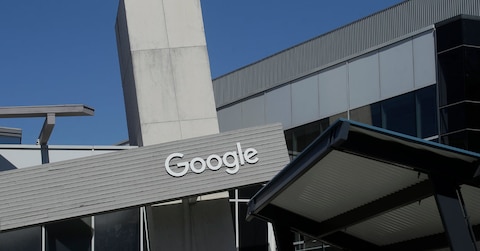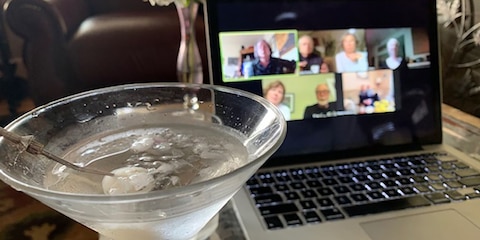The Technology 202: Here’s what Washington regulators might have missed about Instagram – The Washington Post
with Tonya Riley
Regulators and lawmakers have been underestimating Instagram for years.
That’s the argument in a new book from Sarah Frier called “No Filter: The Inside Story of Instagram.” It details the rise of the photo-sharing darling – from a simple app to make photos more beautiful to a cultural force that has changed our relationship with technology.
Instagram has many of the same problems as the social networks under scrutiny in Washington.
Yet as a parade of executives Washington to answer for the tech industry’s ills, it is Instagram’s parent company Facebook that has been in the hot seat. Even as the photo-sharing app steadily amassed power and users, executives from Instagram have largely avoided the regulatory glare, Frier writes.
Frier’s book aims to pull back the curtain on Facebook’s controversial acquisition of Instagram – and its true costs.
The account could have major implications as Washington probes Big Tech’s power and top lawmakers revisit the deal to understand whether current antitrust law is up to the task of policing the tech industry.
Facebook’s 2012 acquisition of Instagram for about $1 billion is one of the most famous deals in Silicon Valley history – and perhaps one of the best bargains. Frier writes the company would be worth north of $100 billion if it were a stand-alone business today, per analyst estimates. Yet it sailed through with little opposition from Washington regulators – whom Frier argues were short-sighted about the potential Instagram and Facebook had for big growth.
Frier joined me to talk about what Washington policymakers can learn from her book. Here’s our interview, lightly edited for length and clarity.
The Technology 202: What do you think regulators in the U.S. and the U.K. missed when they were reviewing Facebook’s acquisition of Instagram?
Sarah Frier: They didn’t understand the network effect. They didn’t understand that Instagram was already winning in its category. When Facebook presented a lot of the background to regulators about the deal, they talked about how Instagram was just one of many photo-sharing apps. And therefore, there was no reason to believe that it was like two winners joining up together.
What [Facebook chief executive Mark] Zuckerberg understood is once you got enough people to be on a network, you can make money off them eventually. He knew that even though Instagram did not have a business model. And even though Facebook on mobile advertising was very nascent, that eventually it would be fine because all you need to get started in the social media business is the human attention.
You write in the book that antitrust laws were not written for the Instagram deal. Why not? And what do you think lawmakers should consider as they’re conducting this broad antitrust review in Washington right now?
What the antitrust law looks at is consumer harm, especially financial harm. For the Facebook-Instagram deal, what they’re really getting a monopoly on is our time on the Internet and our attention. I don’t think that there’s a really good way to articulate what that power means for people and what it costs them.
One of the things that I reveal at the end of the book is that by combining Facebook and Instagram more deeply and by asking the Instagram folks to have their problems solved through a central Facebook team, Instagram became a second priority, or even third or fourth priority for Facebook. That is the cost.
Instagram co-founder and former chief executive Kevin Systrom never had to appear on Capitol Hill even after people learned that there was Russian influence on Instagram during the 2016 election. Why do you think Instagram hasn’t faced the same amount of scrutiny as Facebook on that issue?
That’s one of the biggest benefits of being part of Facebook.
If Instagram was not part of Facebook, you would certainly be seeing Kevin Systrom on the stand. You would certainly be seeing more people interrogating the product and its impact on our society. Facebook is such a lightning rod, and because of that, it’s always been strategic for Facebook to take most of the fall here, even when that Senate report in 2018 came out explaining that Russia, in fact, posted more on Instagram than they did on Facebook. It barely gained any traction.
I think one reason besides Instagram’s ownership by Facebook is also because people had a good feeling about Instagram, that it had a better brand.
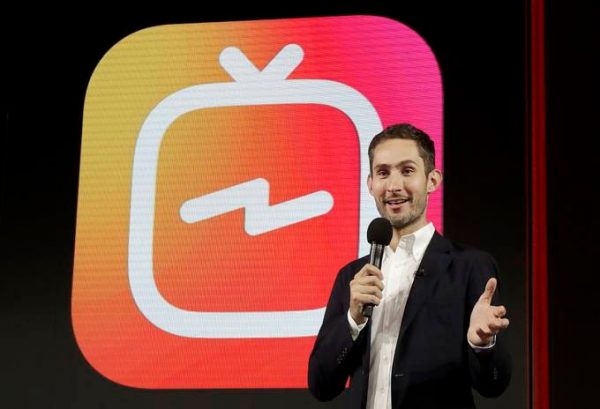
Kevin Systrom, CEO and co-founder of Instagram, prepares for Wednesday’s announcement about IGTV in San Francisco. (AP Photo/Jeff Chiu)
Is there an advantage for Facebook to tie all of its brands together as it faces more antitrust scrutiny?
I think it helps with the regulatory scrutiny in many ways, because, first of all, Facebook can give one answer to governments when they’re asked about their data policy, when they’re asked about their content. They can say this is the policy for all of Facebook and this is how we handle it across all of these apps. So they can have one representation. It also helps in terms of making the argument that Facebook is not an organization of distinct apps, but actually just one main network. And the call to break Facebook up, it would just be so complicated. The more regulators wait to do it, the more integrated Facebook will become.
Instagram’s new head, Adam Mosseri, ran Newsfeed for Facebook and your book explains he was one of the first executives to warn about misinformation in 2016. What does his leadership mean for the way Instagram handles misinformation?
The problem with treating Instagram’s problems as a subset of Facebook is that Instagram works completely differently than Facebook. Instead of having mutual friendships, you have a follower model where anyone can follow anyone. Instead of having a requirement to use real names, you have anonymity. Instead of having virality of content, you have no re-sharing on Instagram. In fact, it’s the accounts that end up getting attention and fame instead of the content itself. And so all of those things have different implications for how you would police it.
And so I think that there should be different ways to solve problems with Instagram.
As someone who’s been watching the company for so long, how do you think the coronavirus is changing Instagram?
Previously, Instagram was this place to host the most optimistic, aspirational version of your life. Now it’s more about connection with other people and less about the show. We’re seeing a lot of live video, we’re seeing a lot of direct messaging become more popular.
Our top tabs
Lawmakers are raising concerns that Amazon might have lied to Congress about its handling of competing sellers’ data.
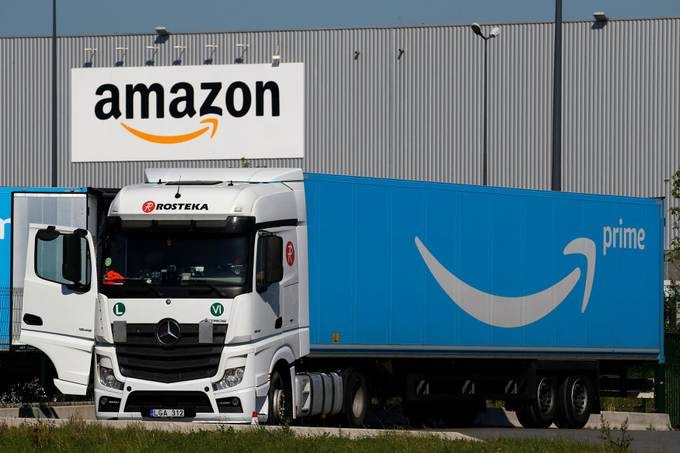
A truck with the logo of Amazon Prime Delivery is seen at the Amazon logistics center. (Pascal Rossignol/Reuters)
Democrats want an explanation from the company after The Wall Street Journal’s Dana Mattioli and Ryan Tracey reported that the company siphoned off data from sellers to design its own competing products. The practices described in the report are at odds with the company’s testimony to Congress during an antitrust hearing in July. (Amazon chief executive Jeff Bezos owns The Washington Post.)
“At best, Amazon’s witness appears to have misrepresented key aspects of Amazon’s business practices while omitting important details in response to pointed questioning,” Rep. David Cicilline (D-R.I.), the chairman of the House antitrust subcommittee, said in a statement to Politico’s Cristiano Lima. “At worst, the witness Amazon sent to speak on its behalf may have lied to Congress.”
Other leading Democrats also joined in, accusing the company of misleading lawmakers:
Amazon employees used sophisticated data about best-selling items sold by third-party sellers to set prices and decide on production for Amazon’s in-house brands, Dana found in interviews with more than 20 former employees and one current employee. In some cases, Amazon based its product research on items that were sold almost exclusively by one company despite maintaining it doesn’t use the sales data of individual sellers for research.
Amazon told Dana it strictly prohibits the behavior described by employees. Amazon also maintains it doesn’t use the sales data of individual sellers for research.
President Trump could use a plan to overhaul the U.S. Postal Service to raise prices for Amazon.
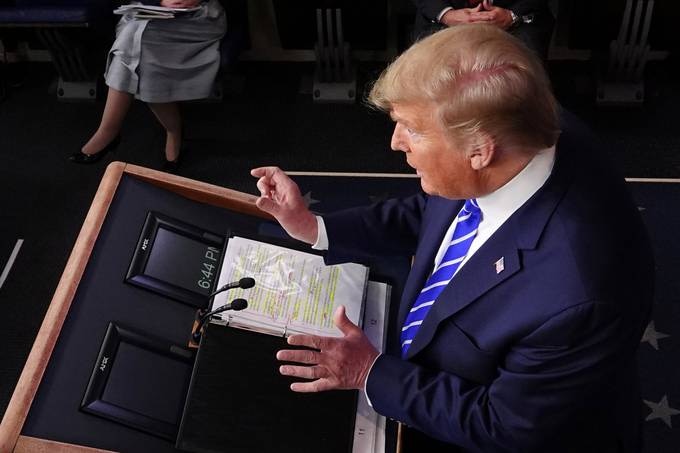
President Trump answers a question during the daily coronavirus outbreak task force briefing at the White House on April 23. (Jonathan Ernst/Reuters)
Treasury Secretary Steven Mnuchin told senior U.S. Postal Service officials that he would approve a $10 billion loan for the agency as leverage for influence over its delivery fees, my colleagues Jacob Bogage and Lisa Rein report. The talks are preliminary.
Trump has argued e-commerce services such as Amazon are exploiting the Postal Service — and the loan could give him an opportunity to intervene. Trump previously urged the Postal Service to double its rates for Amazon, but the agency has defended its contract with the company.
But higher rates could do more to hurt than help the Postal Service by artificially raising its price above those of UPS and FedEx, analysts tell my colleagues. Amazon would also be heavily affected, but has already shifted toward doing its own last-mile deliveries more frequently.
A Treasury spokesman said it was too early to comment on the terms of the loan. Amazon did not respond to requests for comment.
The Postal Service has struggled financially in recent years, and it says without the coronavirus relief money it may not be able to make payroll and continue mail service uninterrupted past September.
Rant and rave
Trump suggested that the Department of Homeland Security research whether injecting isopropyl alcohol into people with the coronavirus could cure them — without citing any medical evidence. Amazon sellers took note. My colleague Amber Phillips:
The digital race to 2020
Trump campaign staffers are sharing a fake Joe Biden ad online.
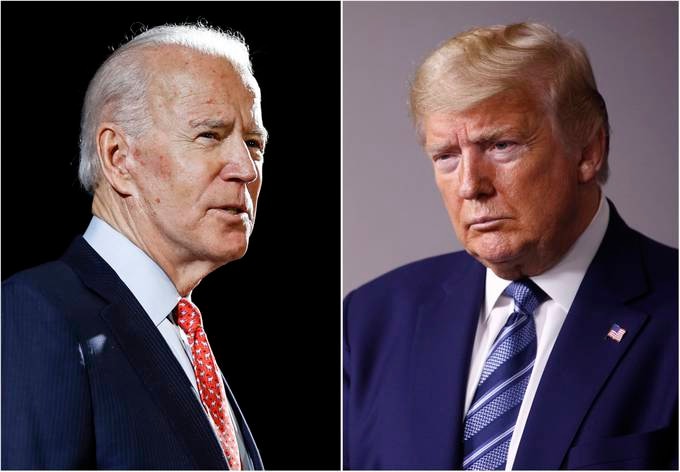
Joe Biden and President Trump. (AP)
The ad appears to have originated from a unverified user and has gone viral with the amplification of Trump staffers, the Verge’s Makena Kelly reports. The Biden campaign confirmed that the ad, which displays Joe Biden’s heart lighting up and has the campaign logo, is fake. Twitter did not respond to the Verge’s request for comment.
Tim Murtaugh, communications director for Trump’s reelection campaign, tweeted the faked ad without its original source asking whether it was legitimate. “Can’t trust Twitter, but this would seem to be the Biden campaign leaning in on the fact that ol’ Joe has lost his fastball,” he added.
The Biden campaign criticized Trump staffers for spreading the image. “While the President continues to assail our free press as ‘fake news’ — once again it is his campaign spreading lies and disinformation,” Bill Russo, deputy communications director for the Biden campaign, told Makena. “Sadly, we don’t expect any better from the Trump Campaign as they get increasingly desperate.”
Twitter’s handling of the fake ad could spark more debate over what qualifies as manipulated media for election-related content.
Inside the industry
Facebook allowed advertisers to target users interested in pseudoscience even as it combated coronavirus misinformation.
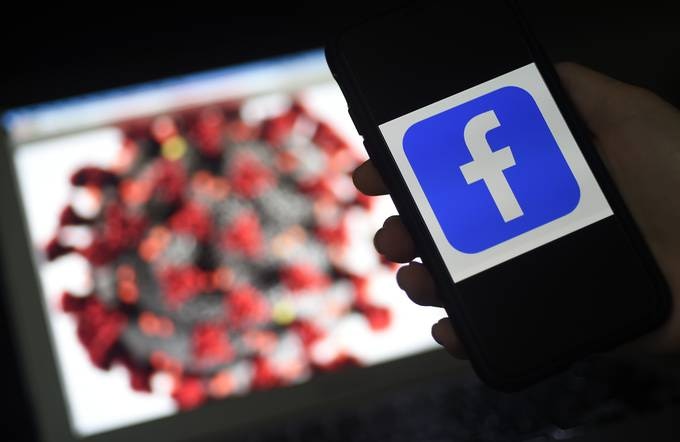
The Facebook logo is displayed on a mobile phone screen. (Olivier Douliery/AFP/Getty Images)
Advertisers could target more than 78 million people the company marked as interested in “pseudoscience,” Aaron Sankin at the Markup found.
The Markup was able to post an ad targeting the audience and get it approved in minutes. Facebook took down the category after the Markup reached out about the category.
It’s unclear how many advertisers used the category, which could provide a potent tool for users seeking to spread misinformation about the coronavirus. For instance, Aaron received one ad for a hat from a company called Lambs claiming to protect wearers from cellphone radiation — which conspiracy theorists have linked to the virus.
“Lambs has never made any connection between 5G and COVID-19,” chief executive Menard de Calenge told Aaron. He insisted that company hadn’t selected the pseudoscience category.
Facebook has approved coronavirus misinformation ads in the past, Consumer Reports found. And despite Facebook’s promises to crack down on misinformation, the Markup was able to find at least 67 user-created groups whose names indicate coronavirus conspiracy content. Facebook spokesperson Devon Kearns said it was reviewing the groups.
Rob Leathern, director of product management at Facebook, said he was looking into why the category wasn’t previously removed:
More from industry:
Google Will Require Proof of Identity From All Advertisers
A slew of scams and misleading ads pushed the search giant to expand its verification policy.
The New York Times
Zoom’s problems continue
Ericsson, Bank of America, and carmaker Daimler are just a few of the companies that have followed Tesla in banning the use of Zoom.
The company announced plans to fix myriad security concerns, but the problems continue to plague Zoom’s reputation for high-profile clients, Vlad Savov, Debby Wu, and Lananh Nguyen at Bloomberg News report.
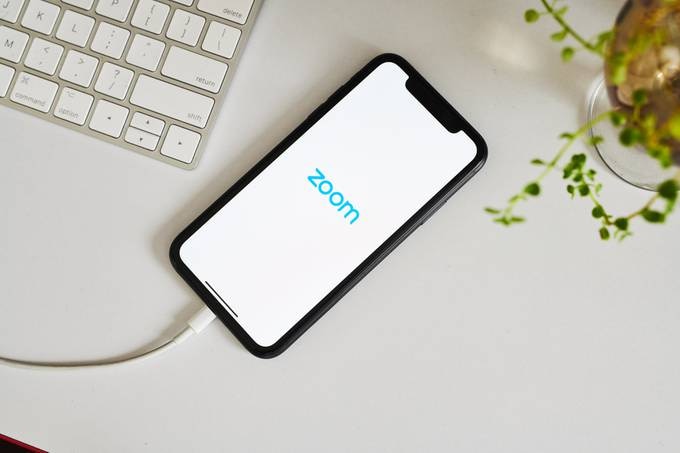
Zoom on an iPhone. (Gabby Jones/Bloomberg News)
But Zoom could have bigger problems, especially as it moves toward a fully encrypted platform.
Zoom is just one of several communications and messaging companies struggling to keep up with a surge in explicit child imagery during the pandemic, Olivia Solon at NBC News reports.
Zoom users have reported having their meetings interrupted with child pornography from uninvited users. NBC News also found accounts on Instagram, Facebook, Twitter and in YouTube comments asking for child abuse images, sometimes called “c.p.” as a shorthand for children. The posts linked to private messaging apps and file sites where the illegal content proliferates.
The issue is compounded by more users staying at home and a reduction in human moderation resources by tech companies. The struggle could embolden lawmakers who have centered child abuse content in their crusade against platforms increasing encryption, which makes that content harder to detect.
Instagram said it has not reduced efforts to review child sexual exploitation material.
Workforce report
Instacart will hire 250,000 more shoppers, the company announced yesterday.
The company will also extend covid-19 sick pay for shoppers and “in-app check-ins for shoppers that need health and safety kits,” Natasha Mascarenhas at TechCrunch reports.
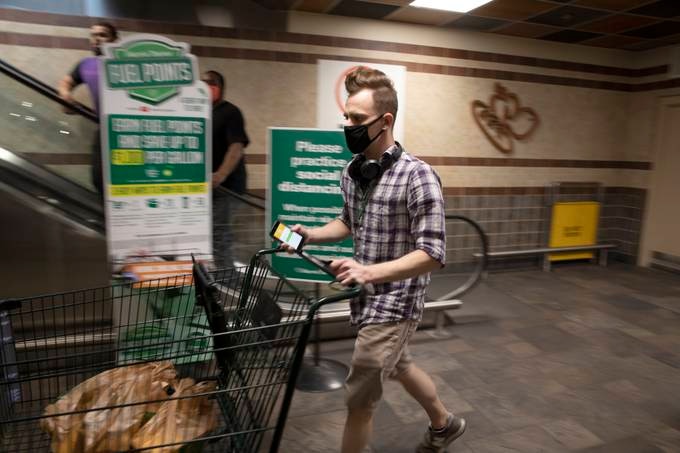
Matt Gillette, a 36 year-old Instacart shopper, takes his order to his car at a Harris Teeter supermarket in Washington on April 6. (Evelyn Hockstein for The Washington Post)
The company hired an additional 300,000 shoppers just last month and is working on more than doubling its customer support team. Instacart made some health and safety changes in response to worker protests, but workers say the company still hasn’t done enough. For instance, workers are still requesting that the company raise the minimum tip for deliveries.
Shoppers also criticized the quality of the protective gear kits the company sent out. Here’s one shopper unboxing her kit:
Shoppers are planning a general strike for May 1 alongside Amazon and Target’s Shipt workers.
More workforce news:
Newly Unemployed, and Labeling Photos for Pennies
People who’ve lost jobs and are stuck indoors are turning to crowd work—filling out online surveys and transcribing audio for less than the minimum wage.
Wired
Over a dozen former employees tell The Verge about major problems plaguing the electric scooter company.
The Verge
Trending
Hopes of using coronavirus lockdowns to tick off rainy-day jobs have proved empty, because our social lives are busier than ever. ‘You wouldn’t socialize that much on a normal week.’
Wall Street Journal
Even Elijah Wood needs Twitter’s help to sell his Animal Crossing turnips
The Lord of the Rings star went to Twitter for help in selling his turnips.
The Verge
Bookmark this
Daybook
- Google will announce earnings on Tuesday.
- Facebook and Microsoft will announce earning on Wednesday
Have an event you want our readers to know about? Email tonya.riley@washpost.com.
Before you log off
A piece of history:

